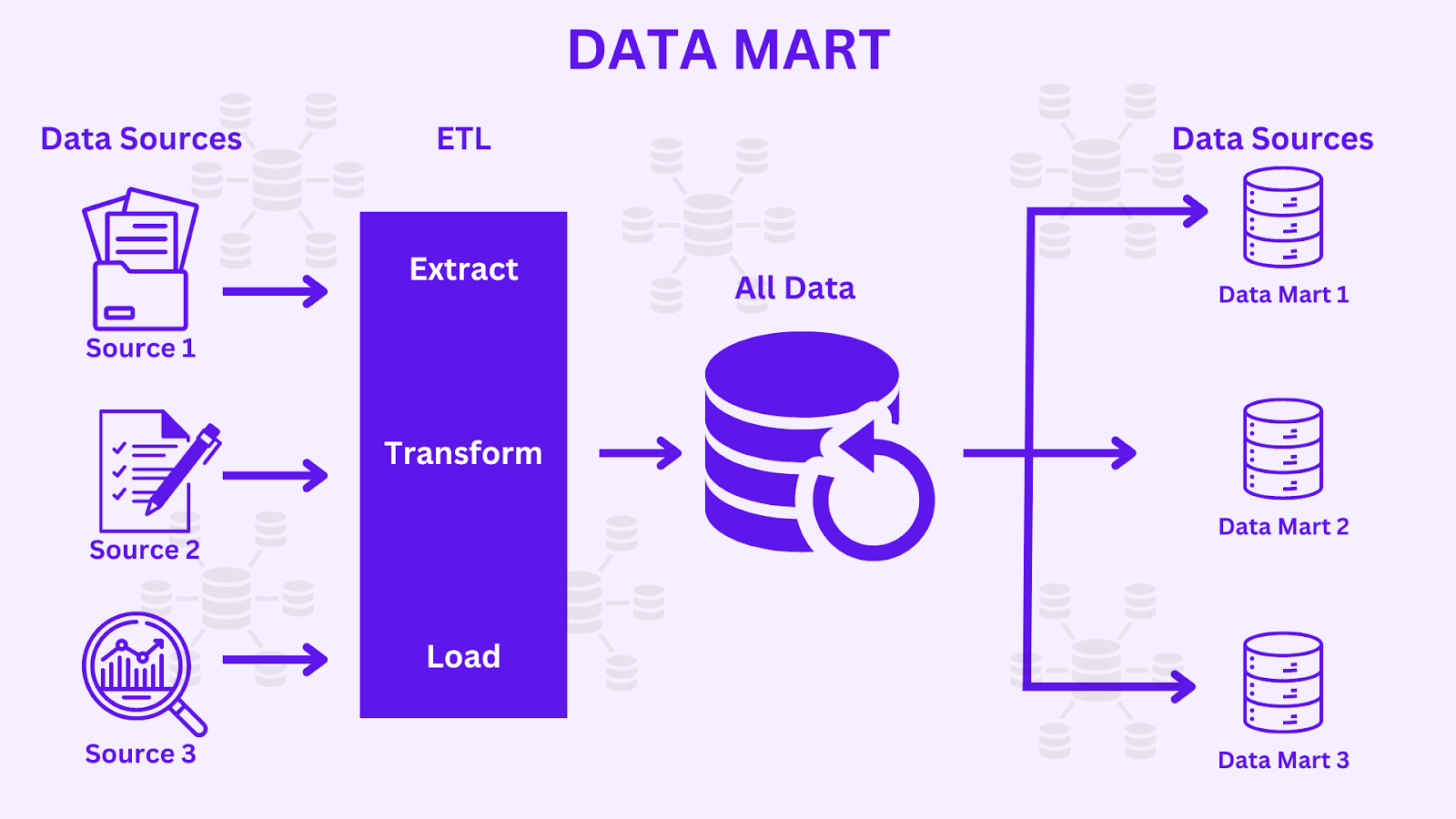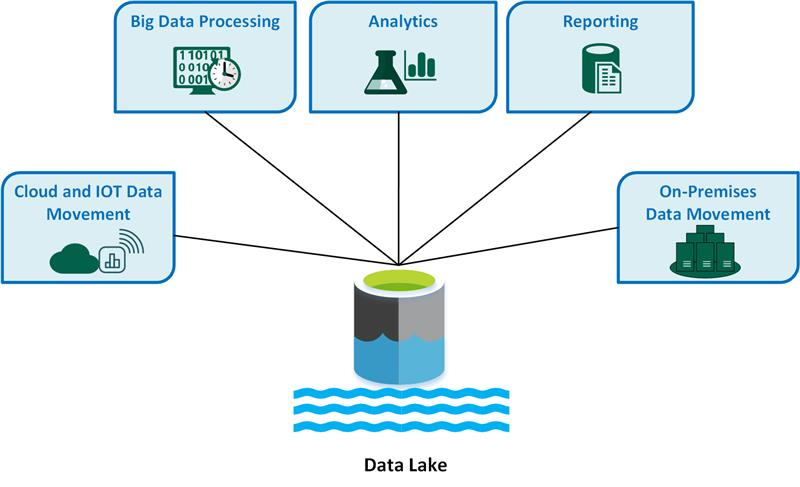Data Mart vs. Data Lake: Making the Best Choice
Summarize this article with:
✨ AI Generated Summary
Data marts are structured, subject-oriented subsets of data designed for specific business units, optimized for reporting and analysis with predefined schemas. In contrast, data lakes store raw, unstructured, and semi-structured data at scale with a flexible schema-on-read approach, supporting diverse analytics and large-scale storage.
- Data marts focus on clean, curated data for specific departments, using ETL and dimensional models.
- Data lakes handle all data types, enabling real-time or batch processing without prior transformation.
- Data governance is more controlled in data marts, while data lakes require additional governance frameworks.
- Airbyte is recommended for automating data integration into both data marts and data lakes, offering extensive connectors and pipeline management tools.
To harness your dataset's full potential, organizations must select the best enterprise data management system that fits your requirements. Two of the most used systems are Data Mart and Data Lake. Both are different in their design, functionalities, and use cases. A data mart is a structured subset of data designed for a specific purpose, while a data lake is a storage system responsible for raw datasets.
In this article, we will discuss data mart vs data lake in detail, and you will learn their definition, key differences, and what's the best choice for you.
What is Data Mart?

A data mart is a system that supplies subject-oriented data necessary to support a specific business department or unit. It maintains clean data that is ready for analysis, but the visibility scope is limited to a unit.
For example, you can create a data mart to support reporting and analysis for the marketing department. This limitation also has some benefits. By limiting the data to specific departments (such as marketing), the business unit does not have to shift through irrelevant data.
You can feed data directly from data sources or an existing data warehouse in a data mart. They use highly structured schema optimized for reporting and analysis, commonly dimensional modeling such as snowflake or star schema.
What is a Data Lake?

A data lake is a storage repository without any predefined structure or schema. It is used to store raw and processed data, whether structured, semi-structured, or unstructured, at a large scale.
Unlike data mart, which stores particular data, a data lake captures anything you deem valuable for future use. This can include images, social media posts, pdf, flat files, and videos.
A data lake provides a secure and scalable platform that allows you to do the following things:
- Ingest data from any system at any speed.
- Store any type of data.
- Process data in real-time or batch mode.
- Perform analytics.
Overall, it is one kind of data management system that can store and manage almost anything and doesn't require a complex setup.
Data Mart Vs Data Lake: In-Depth Comparison
The main difference between a Data Mart and a Data Lake is that a Data Mart is a subset of a data warehouse, designed for specific business functions with structured data, while a Data Lake stores raw, unstructured, or semi-structured data at scale for diverse analytics.
Below is a detailed comparison between data mart vs data lake to understand their distinction better:
Data Mart vs Data Lake: Characteristics
A data mart:
- Only focuses and is designed around the unique needs of only one business unit or subject matter.
- Contains a curated subset of data from the larger data warehouse.
- Holds the data with limited scope.
- Particularly, it uses a star schema or similar structure.
A data lake:
- Stores any data, including structured, semi-structured, and unstructured data.
- Specifically designed to be highly scalable and hold huge amounts of unstructured data.
- Offers quick data access for analysis and processing.
- Enables a flexible schema-on-read approach for data analysis and querying.
Data Mart vs Data Lake: Architecture
Data marts have a complex architecture, and each type has a different design. However, it has some of the typical fixed layers that any of its types cannot deny. This includes external data sources, ETL, data storage, and access tools. A data warehouse layer is added in dependent and hybrid data marts. However, independent data marts don't need a data warehouse.
Data lake architecture is based on distributed file systems such as Amazon S3 or Azure Blob Storage. It is built on top of cloud-based infrastructure and uses cloud-based storage solutions, which makes it highly scalable and efficient. A data lake typically consists of the following layers: data sources (structured, semi-structured, unstructured), data ingestion (batch or real-time ingestion), data storage, data processing, and analytical tasks.
Data Mart vs Data Lake: Data Structure
Data marts have predefined schemas based on specific business units and areas you serve. The schema of this data management system is primarily designed to support the reporting and analysis needs of only that specific domain. So, a data mart is ideal if the data is in a structured format and analytics requirements are focused on a particular business area.
Contrarily, data lakes follow a schema-on-read approach. This means that data is stored in its raw format as it is, and schema is applied during data analysis or retrieval. Therefore, if you want more flexibility and agility to handle diverse data types and evolving data, Data Lake is a good choice for you.
Data Mart vs Data Lake: Data Transformation
Data mart involves a structured ETL process where data is extracted from the operational system, transformed, and then loaded into a dimensional model of the data mart. This process involves filtering, cleaning, aggregation, and other transformation tasks to meet specific business area needs.
On the other hand, data lakes only focus on data integration and don't do transformation. It can accommodate unprocessed and raw data from various sources, which makes it easier to focus on data without extensive transformation efforts. The transformation and integration occur while you want to do data analytics or exploration within data lakes.
Data Mart vs Data Lake: Data Governance
Data marts pay attention to governing and controlling data within the business unit's specific boundaries. It offers a controlled environment for data consistency, quality, and security as the data is managed for a specific purpose.
On the contrary, data lakes require additional governance measures to ensure access controls and regulatory compliance. It stores diverse data from disparate sources, so ensuring data quality and lineage becomes challenging. Therefore, you must take additional measures and use frameworks to establish governance within the data lake.
Data Mart vs Data Lake: Use Cases
Below are the use cases of data mart:
- Data marts suit specific business functions or units with defined data needs, such as finance, marketing, or HR.
- Data marts come in handy to monitor and optimize operational processes across different functions, such as human resources and customer service. Using this system, you can identify inefficiencies, track key performances, and streamline workflows.
- You can use data marts to store and analyze data related to a particular product or a feature related to a business unit. This can help you optimize products, identify opportunities for improvement.
Below are the key use cases of the data lake:
- It is ideal for storing all data types for future analysis, such as sensor data, web server logs, and external data sources.
- You can use data lakes to get a 360-degree view of data to create comprehensive strategies by aggregating data from all the touchpoints and channels within the organization.
- Data lakes are often used to analyze streams of data to identify high-level trends and granular, record level insights.
Integrate Data to Data Mart and Data Lake Using Airbyte
After choosing which data management system to use according to your business requirement, you may want to integrate data into a data mart or data lake. That's where you can use tools like Airbyte to automate the data integration process.

Airbyte is a cloud-based data integration tool that follows a modern ELT approach to ingest data from disparate sources to a data mart or data lake. The platform offers the largest catalog of pre-built connectors that count over 350+ to work with any data source. If you don't find data source connectors that meet your specific needs, Airbyte also provides a connector development kit to build a custom connector within minutes.
That's not all. Airbyte allows you to create data pipelines by offering different ways to build pipelines, including UI, PyAirbyte, Terraform provider, and APIs.
In addition, the platform gives cutting-edge features to streamline your data integration experience, such as scheduling and monitoring, robust security measures, and regulatory compliance.
Overall, if you have any requirements related to data integration to a data mart or data lake, Airbyte has got you covered.
Conclusion
Both data mart and data lake are robust data management tools for analyzing data for your organization. Data marts provide a more focused view of data for specific business operations, promoting user-friendliness. At the same time, data lakes offer flexibility and scalability capabilities to work with diverse and unstructured data types from any data source.
The choice between data mart vs data lake solely depends on the nature of the data, analytical requirements, and scalability needs.
However, if you want to build automated pipelines to streamline data integration to a data mart or data lake, we recommend using Airbyte. With its vibrant community, intuitive user interface, and orchestration capabilities, you can connect almost any data source to your data management system within a few clicks. Sign up with Airbyte today.

